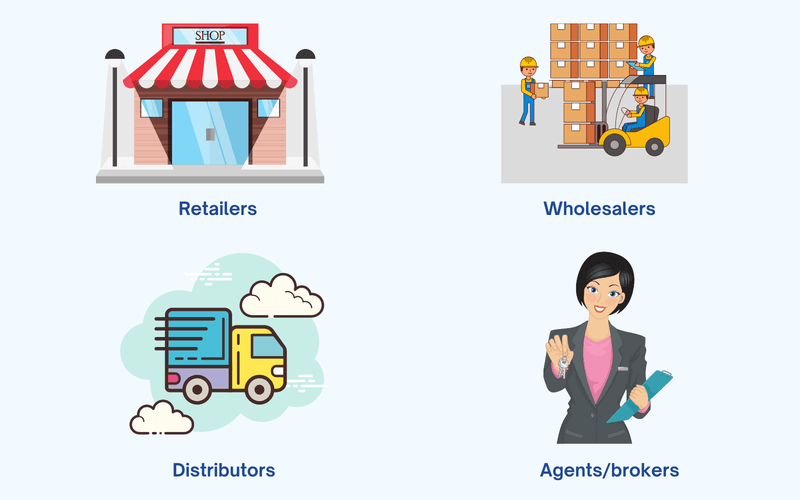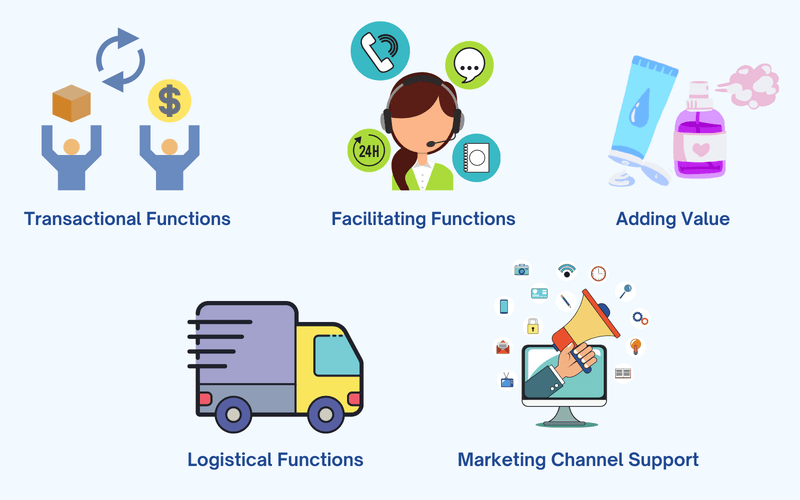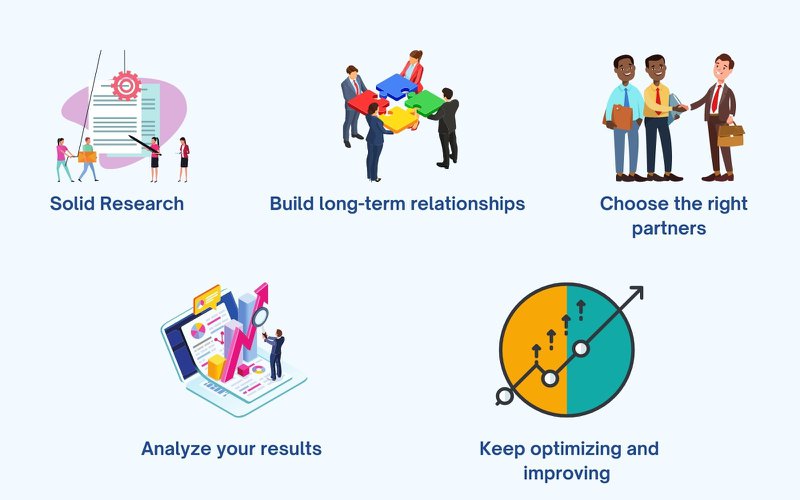Every company wants its products to reach the right customers. There needs to be a smooth flow of communication between the producer and the consumers for that to happen. After all, the brand needs to be easily accessible to the customer, and that’s where channel management comes in.
Marketing efforts consist of several activities, all of which, when carried out meticulously, result in successful channel management and product launch. These include market research, understanding consumer and business behavior, marketing segmentation, targeting markets, setting prices, and new product development.
However, all this work will be nullified without the right product placement strategy. It becomes essential to get the fourth P of marketing right.
Yes, we are talking about: Place. This is where channels and channel management come into the picture. It includes all the activities that help you get the right product to the right customer when they want it.
So, let us start with the basics of understanding what a channel is. First, let’s give you a sneak peek of what you will see here.
- What is Channel Management?
- What Is the Purpose of Channel Management?
- Types of Intermediaries in Channel Management
- What Are The Characteristics of a Channel?
- Functions of Channels in Channel Management
- How To Select A Channel Member?
- Management of Channel Members
- Evaluating Channel Performance
- Tips for Successful Channel Management
- Preparing Well Does the Trick
What is Channel Management?
Channel management is an activity that firms engage in to maximize the reach of their products to the maximum number of people. There are three main types of channels:
Direct Channel
A direct channel is organized and set up by the manufacturer. They are typically more expensive to set up initially since they require more capital investment.
Direct selling especially helps if you are selling an art form as it gives people the opportunity to appreciate your work and build your brand over time.
Advantages of Direct Channel:
- It is the shortest and simplest channel of distribution.
- The absence of intermediaries leads to higher profit margins.
- It allows the brand to have greater control over the customer experience.
A great example of this is Apple. Customers go through the brand to buy the products- either in digital or physical stores, but the experience they get in the store extends their brand.

Even though Apple has some presence in third-party brick-and-mortar stores, it tries to attract customers to its branded stores.
Disadvantages of Direct Channel:
- You are competing against vast networks of wholesalers and retailers.
- Even though the costs are lower, in some cases, customers have to pay the total price because the manufacturer has a mapped price, which he often respects more than the retail.
Indirect Channels:
Here the products are sold by intermediaries, not by sellers.
Indirect channels allow you to sell larger volumes but impact the prices of the products due to the commission that has to be paid to the intermediaries.
Hybrid Channels:
As the name suggests, hybrid channels are a combination of direct and indirect channels. An example of this is the use of authorized distributors. Here the brand has a partnership with intermediaries but still controls the customer experience aspect.
What Is the Purpose of Channel Management?

The main goal of any company sales team is to sell its products or services to as many people as possible by attending to their customer’s needs in the best way possible. Why? Obviously, it is because the company wants to make the most profit from its efforts and build its brand for future sales.
But, manufacturing an excellent product is not enough for a business to succeed. The products need to find the right buyers to be targeted with the right messaging – differentiated or undifferentiated, and the right approach for successful conversions. That’s where your marketing channel is essential.
Does your target audience spend a lot of time on the internet? If yes, you can partner up with an online marketplace to sell your products.
Better still, you can open an online store of your own. Then you will start reaping benefits from selling and marketing your products via a medium where your customers spend most of their time as they keep coming across your campaigns or presence.
Here, the online store is your channel partner.
Your potential customers can result in successful conversions by tapping the right channel partners. So, your relationship with your channel partners is crucial. It is something that channel managers pay special attention to.
Adding New Channels

There are several examples of companies adding new sales and marketing channels. The new app launched by Forever 21 is one example. The brand started with one store in 1984.
The brand wanted to add a digital component to its magazine, and that’s why it came up with its augmented reality app. The new Forever 21 app opens new channels for its customers and takes online shopping to the next level.

Conversely, say you have been selling your products online, and your brand is doing well, but you might benefit from adding another channel to sell your product. Or your marketing consultant might advise you to tap into another marketing channel, like retail shops.
Many brands start with creating chaos around their brand on social media first, and once it becomes a hit, they opt for adding retail shops, making it their another channel partner. It starts with awareness, promotional or general field campaigns.
This is where adding new channels can do the trick for brands that have only been online. In fact, more and more online sellers are opening brick-and-mortar stores nowadays to give their customers a very personal buying experience.
There’s one goal to make the most of your sales and marketing channels. But if you can benefit from adding new channels, why not go ahead with it? And good channel management will help you add these new channels easily.
Increase Efficiency of Existing Channels
Now we’ve talked about adding new sales and marketing channels. It is equally important to make the most of the existing channels.
Good channel management will help you build a strong relationship with your channel partners.
That’s why the biggest manufacturers look to hire skilled channel managers. It helps them keep track of the performing channels.
Also, they can put more effort into channels that aren’t profitable enough.
There are several channels manufacturers can sell on in today’s business world. One can sell through vendors, retailers, and online stores. That’s why channel management has become so crucial for every company.
Types of Intermediaries in Channel Management

Channel intermediaries are groups and individuals that make it possible for customers to access the product. This is done so that companies don’t have to own the entire supply chain. Here are the various types of intermediaries used by companies
Retailers:
These include everything from grocery stores to supermarket chains and everything in between. However, the retailers buy products from intermediaries, typically wholesalers, and sell them to the end-user for profit.
Wholesalers:
They typically buy a company’s products and often resell them to other intermediaries. They believe in bulk to get discounts and sell at a higher price to make money.
Distributors:
Distributors take ownership of a product. They store it and sell it at a higher price to other intermediaries. They have the following characteristics:
- Region-specific
- Ally themselves to complementary products
- Offer technical support to retailers and wholesalers
Agents / Brokers:
Agents act as an extension of the company. They are hired to sell the goods to the customer and earn a commission in the process. The difference between agents and brokers is that brokers have a short-term relationship with the company.
What Are The Characteristics of a Channel?
There exist specific characteristics that are common across channels:
Elimination or substitution of channel institutions does not eliminate their function.
The function is either moved forward or backward in the chain and has to be carried out by someone else. For instance, if the wholesaler is removed from the channel, the manufacturer or the consumer will take up its function.
All channel institutions are involved in multiple transactions at any given point in time.
Another essential fact about channels is that the completion of tasks to your satisfaction or the satisfaction of other channel members is due to the routinization benefits provided by the channel. This means that the right products are always available where the customer expects to find them.
The product and competitor information is also readily available.
The producer also has an idea of how many units to manufacture.
There are occasions where intermediaries are either incompetent or unavailable, and direct selling is the best option. Some examples of this category are door-to-door selling and catalog sales.
In the case of services, it becomes imperative to deliver the product as and when demanded by the consumer. ATMs, 24-hour clinics, and pharmacies are some ways these demands are met.
Functions of Channels in Channel Management

Channels play a vital role in marketing. Some of their functions are.
Transactional Functions:
Channel partners buy products from you and sell them to their customers. They perform the following transactional functions:
- Increase total revenues
- Reduce transaction costs
- Hold inventory
Facilitating Functions:
Channel partners facilitate and support sales of your products. Some of the facilitating functions that they carry out are:
- Dealing with customers
- Negotiate sales
- Providing customer service
- Gathering marketing intelligence
Adding Value:
Channel partners help enhance the value of a transaction. They may:
- Group related products together
- Adapt the products to the customers in specific markets
Logistical Functions:
Channel partners such as distributors and wholesalers take responsibility for the distribution of your products. They help with storage and transportation to meet customer expectations.
Channel partners also reduce the burden on your logistics operations by taking bulk orders and breaking them down into smaller quantities.
Marketing Channel Support:
Marketing Channel partners can help with installation, service, and maintenance. This reduces the pressure on your support teams and ensures prompt service for your customers.
How To Select A Channel Member?

Selecting the right channel members is a crucial step in channel management. It involves the following aspects:
- Finding prospective channel members
- Assessing their fit by applying selection criteria
- Securing the prospects as actual channel members
- Finding prospective channel members
These are some of the most likely sources to find prospective channel members:
- Field sales organizations
- Trade sources
- Reseller inquires
- Customers
- Trade Shows
- Advertisements
- Business databases.
Applying Selection Criteria
Having shortlisted potential channel partners, one must have a set of criteria in place to select them. It is important to remember that no group of selection criteria is comprehensive under all conditions. Some critical factors to consider while selecting channel members are given below:
- Credit and financial condition
- Sale strength
- Product lines
- Reputation
- Market coverage
- Sales performance
- Management succession
- Management ability
- Attitude
- Size
Incentives for securing channel members
There are four broad types of incentives for channel members:
- Product Line: The manufacturer should offer a strong product line that can benefit the channel members in terms of sales and profit
- Promotional support: Most channel members also look to the manufacturer for promotional support in terms of advertising allowances and showroom displays.
- Management Assistance: This includes areas such as training programs, financial planning, market analysis, and inventory control for channel members to manage their businesses better
- Fair Dealing and Friendly Relationship: There should be a feeling of mutual trust in the relationship between a manufacturer and a channel member.
Management of Channel Members

It is essential to determine the channel responsibilities. The members must work together and perform the tasks they are best suited for. The firm must remember that they are selling their products through intermediaries and selling their products to them and with them. It must proactively invest in Partner Relationship Management (PRM) and Supply Chain Management software to forge long-term relationships.
Channel management involves establishing the physical channel, and the other is managing the diverse activities of the marketing mix.
Motivating the Various Channel Members.
The manufacturer must understand the pains of all marketing channel members through research studies and channel audits conducted at regular intervals. The manufacturer must offer support to the channel members in the form of cooperative arrangements at various levels.
Another way of assisting channel members is by partnerships and strategic alliances. These partnerships typically consist of three phases:
- The manufacturer explicitly communicates his policies on areas such as product availability, pricing, technical support.
- Assessing all existing distributors on their capabilities
- Continuous evaluation of policies that guide the relationship with channel members
Other motivational strategies include:
- Monetary incentive with higher trade discounts
- Training channel members
- Greater logistical support
Effective leadership is vital in attaining a well-motivated team of channel members.
Evaluating Channel Performance
Channel Performance is evaluated based on various factors. Some of these are:
- Quantitative criteria like sales volume, calls per day, sales orders, profit margins.
- Qualitative criteria like sales skills and territory management
Some of the factors that affect this evaluation are the nature of the product, the number of channel members, the degree of control over the different channel members, and their importance in the overall value chain.
Channel performance evaluation can be done through company records, managers’ field visits, or customers.
Channel management is an integral part of the marketing strategy. Therefore any company must have the vision to include it in the early stages of planning a product launch.
You are wondering how you can up your channel management game? It’s all about managing your channels and channel managers well. Let’s talk about some tips for successful channel management.
Tips for Successful Channel Management

If you manage your marketing channels well, it can do wonders for you. Good channel management is all about being on your toes all the time. But it is also about laying a solid foundation for your strategy.
So, let’s dive right into it and discuss five tips for successful channel management.
Solid Research
A good channel management strategy needs solid research. You need to be aware of what your competitors are doing and the new trends in the market. There are always new players arriving who can disrupt the market channels.
Starbucks is the most successful coffeehouse chain in the world. Starbucks uses research to add or subtract anything from its marketing channels from in-store product testing to customer feedback. Here’s an example of a brand that depends heavily on market research.
Similarly, it would be best to identify which channel partners can benefit you. What more can you do to make the most of your existing marketing channels? Which channels will you benefit from adding?
Solid research will help you devise a clear roadmap to follow. It will provide a solid foundation for your channel management strategy. You will then know how many routes to market you need to reach your sales goals.
Look to Build Long-Term Relationships
Building Long-term Relationships with partners are vital for successful channel management. From the manufacturer’s point of view, the distributors are how the product reaches the consumers.
If you’re a manufacturer, you need to try and inspire a sense of loyalty in your distributors. So, how can you go about building a solid relationship with your channel partner or distributor?
For starters, you can help your partners with activation campaigns. As a manufacturer, you must be willing to support the distributors through marketing efforts. These efforts can be anything from engagement programs to promotional materials.
Also, it is important to keep your channel partners in the loop when making product decisions. After all, the slightest change in your products can reduce their profit margins. Take them into consideration whenever you’re planning on a change.
Your partners will appreciate these efforts from your side. When they feel valued, they will value you in return. And that’s how you can lay the foundation for a long-term relationship with your channel partners.
Choose the Right Channel Partners
Let’s talk about the first point for a while. We discussed how solid research is vital for a successful channel management strategy. Your research might tell you that you need more channel partners. That’s where you need to be more careful.
Choosing the right channel partners is essential, says even the 5 Ps of marketing! For example, your research tells you that most of your customers will be willing to buy your products online. But, how can you select an ideal partner? Start by asking yourself where you should sell your products?
Now, what online stores will suit your product the most? After all, there are countless options for online stores and marketplaces. Unfortunately, not all these options will give you the same output.
Start by making a list of potential channels and channel partners suitable for your business. You can also make a scoring chart on potential channel partners to decide.
In a nutshell, channel management is all about partnership. Every company will have specific suitable channels that it wants to make the most of. As the business owner, you need to identify those channels and decide on your partners accordingly.
Keep Analyzing Your Results
As we said, the performance of different marketing channels is not the same. Not all channel partners give your company the output you want. That’s why you need to keep analyzing the results you get.
Are you benefiting from selling through a well-established store? If not, will your brand benefit from opening an exclusive store? After all, opening physical stores increases website traffic for a lot of stores.
Timely analysis is vital for any business to run successfully. After all, the market keeps changing, and being proactive is crucial. Also, your sales and marketing output will not improve if you don’t evaluate your strategies.
Keep Improving and Optimizing
As we said above, you need to keep finding ways to improve the performance of your marketing channels. And that’s why proper channel analysis and management are vital.
You can use the tips we mentioned above to optimize your marketing channels. But most importantly, you need to keep looking for areas to improve. If you do that, you will start to see an upward growth in how your marketing channels perform.
Furthermore, it would help if you stay aware of the new technology. There are automation tools out there to optimize your sales and marketing processes. As we’re saying, technology is changing the future of sales and marketing.
As a manufacturer, you can help your channel partners understand these tools to make them more profitable and reach your sales goals.
Preparing Well Does the Trick

As we said above, solid research is essential for your channel management strategy. Knowing what kind of channels and channel partners suit your business is critical. That’s why we reiterate that preparing well is vital for your channel management.
So, make sure you do your research right. Also, look to build long-term relationships based on trust. Finally, keep analyzing the results you get out of different marketing channels.

Ranu Kumari is a Professional Writer and a Marketing enthusiast who currently runs her own Marketing Consultancy, LatitudeBOX. She has written promotional articles for multiple brands and has published her work in Scopus indexed journals. She is passionate about expressing her thoughts and ideas to connect with her readers in a voice that they understand.

Great article!
Top site ,.. amazaing post ! Just keep the work on !